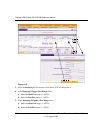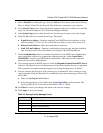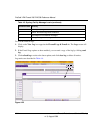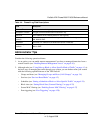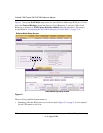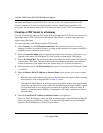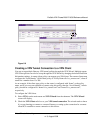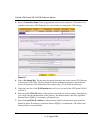
Virtual Private Networking 5-1
v1.0, August 2006
Chapter 5
Virtual Private Networking
This chapter describes how to use the virtual private networking (VPN) features of the VPN
firewall. VPN tunnels provide secure, encrypted communications between your local network and
a remote network or computer.
Dual WAN Port Systems
The dual WAN ports in the VPN firewall can be configured for either Auto-Rollover mode for
increased system reliability or Load Balancing mode for optimum bandwidth efficiency. This
WAN mode choice then impacts how the VPN features must be configured.
Refer to “Virtual Private Networks (VPNs)” on page C-10 for an overview of the IP addressing
requirements for VPN in the two WAN modes. To aid in determining the addressing requirements
for your VPN Tunnel in either rollover mode or load balancing mode, see Table 5-1.
Tip: When using dual WAN port networks, use the VPN Wizard to configure the basic
parameters and them edit the VPN and IKE Policy screens for the various VPN
scenarios.
Table 5-1. IP Addressing for VPNs in Dual WAN Port Systems
Configuration and WAN IP address Rollover Mode
a
a. All tunnels must be re-established after a rollover using the new WAN IP address.
Load Balancing Mode
VPN Road Warrior
(client-to-gateway)
Fixed FQDN required Allowed (FQDN optional)
Dynamic FQDN required FQDN required
VPN Gateway-to-Gateway Fixed FQDN required Allowed (FQDN optional)
Dynamic FQDN required FQDN required
VPN Telecommuter
(client-to-gateway through
a NAT router)
Fixed FQDN required Allowed (FQDN optional)
Dynamic FQDN required FQDN required




